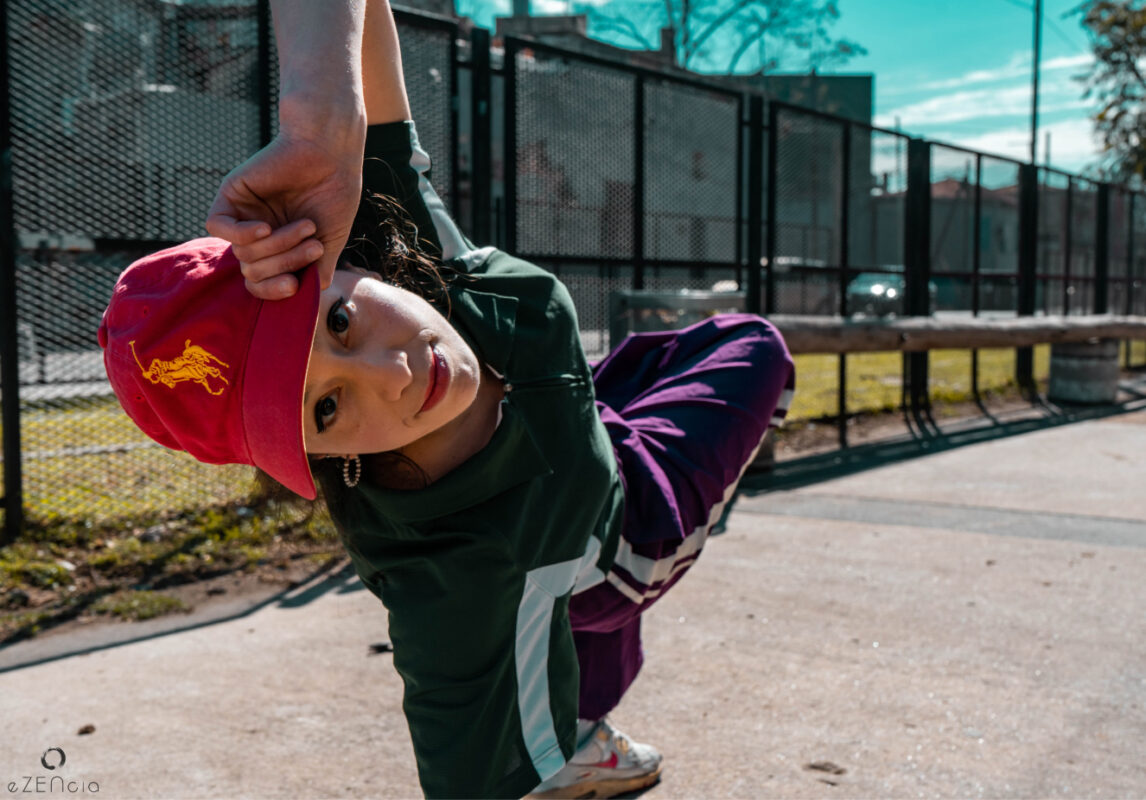
From Artistic Gymnastics to Breakdance
My name is Olivia, but they know me as “Bgirl Oli” in hip-hop culture. I’m from Asunción, but I’ve been in Argentina for ten years. Since I arrived, I’ve been a part of the “Superpoderosas crew.” I feel most comfortable with the identity of ‘Bgirl’ because it’s specific to hip-hop culture. I never think of myself as a dancer because I don’t have a formal dance education. For us, formal training doesn’t exist; our knowledge comes from mutual learning. Being a “Bgirl” for me is a commitment. Being an artist is not just about artistic expression; it’s also about your stance and position of yourself as an artist. It’s a daily decision because you must choose what to do daily. To me, that’s a decision and a commitment. Additionally, you must constantly train, participate, interact with people, and stay active.
Hip-hop came into my life when I was 14 years old during a school exhibition. I was supposed to participate as a gymnast in that exhibition, and we met some guys dancing to hip-hop – back then, we knew it as rap. I was amazed because it had the same impact on acrobatics and artistry but in a wholly liberated way. It didn’t have the strict structure of competitive gymnastics. In competitive gymnastics, you had to do everything perfectly; even a tiny mistake would result in deductions. It was extremely perfectionist and demanding. On the other hand, dancing rap was about forgetting all of that; you danced and forgot about everything. There was no hierarchical coach-gymnast relationship or a federation deciding whether you were suitable for a team, a trip, a world championship, a Pan American competition, or anything like that. Rap had none of that, so the enjoyment was there initially.
That’s how I started. After gymnastics practice, we would go to a shopping center on Saturday afternoons to dance. A group of guys gathered there; we were the only women participating. We did it for a while until they decided to kick us out. That first encounter with hip-hop was also a way to connect with our peers, people who were doing the same thing or wanted to do the same thing from different angles. It was about dancing, doing acrobatics, and enjoying the opportunity to move and feel free. In those early introductions to hip-hop, I didn’t even know what breakdancing or rap was. We had no information about anything. In Paraguay, news arrives very late, including the return to democracy, which came much later for us and undoubtedly had an impact. We weren’t aware of what we were doing, but we did it. We went to competitions, sent ourselves to any place, and participated just to occupy spaces.
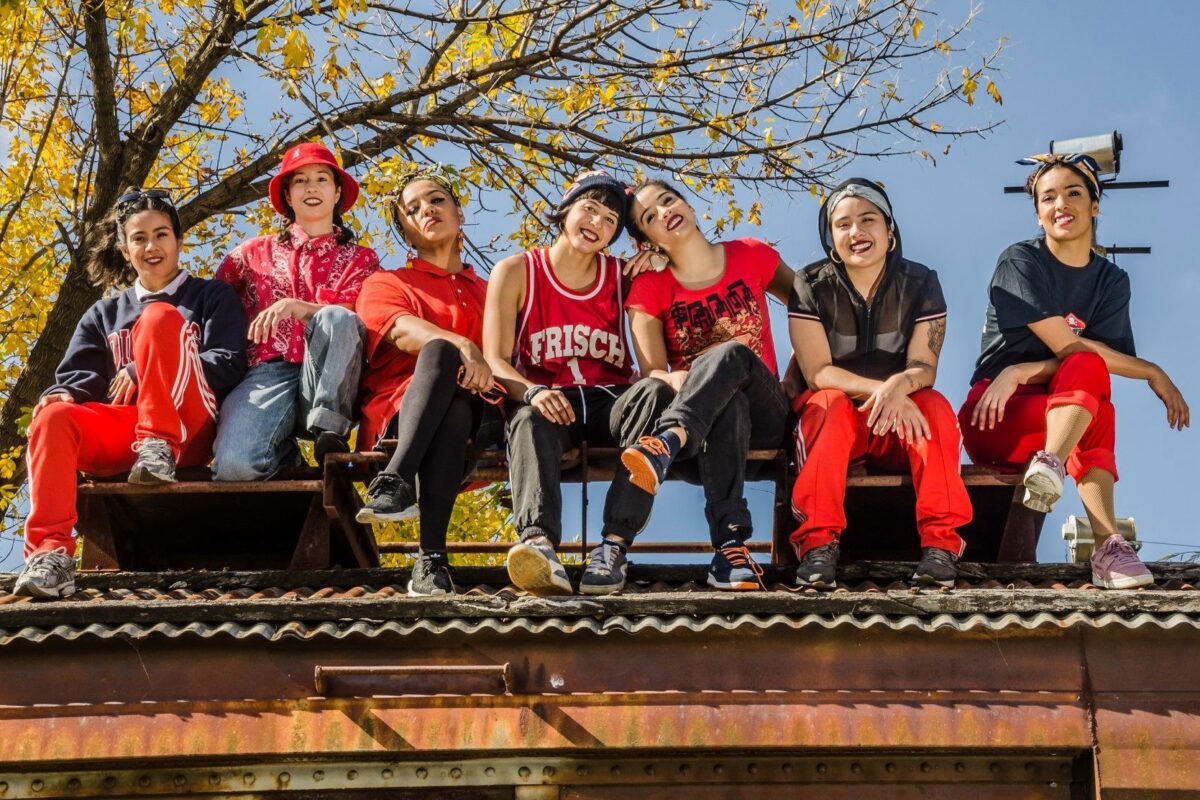
To change one’s skin
I arrived in Argentina because of a solid friendship. When I was a child, I used to compete in gymnastics as part of Paraguay’s national team, and it was there that I met Cielo, who was also part of the team. Cielo lived with her family in Clorinda, a border city in Paraguay. During our teenage years, we both discovered hip-hop together. She moved with her family to Argentina to start her journey in hip hop while I stayed in Paraguay and continued my path. But I also came to Argentina later, and we reunited in 2010. Each of us was involved in hip-hop culture in our respective territories and specific places, and here in Argentina, we merged our paths and decided to form a crew, and we started competing everywhere. We have gone through many beautiful stages, participating in events national and international competitions. We have been traveling these paths together since we discovered each other.
I came to Buenos Aires alone at the age of 26. I wasn’t that young, but it happened overnight. I left everything I had in Paraguay, where I trained and worked as a coach in artistic gymnastics and was a member of Paraguay’s gymnastics federation. Gymnastics had this vertical and militaristic structure that I couldn’t bear any more. So I came here to Argentina and found a completely different reality, so I stayed. I belong to both places, but I am another woman in those two places. I grew up in Paraguay but emancipated myself here, in Argentina.
Meeting Cielo every year in Asunción and going to Brazil together for an event where we competed against other girls significantly influenced my decision to leave Paraguay. Back home, I was training alone, and I felt uncomfortable with the presence of my male peers and their comments. They didn’t have scheduling issues like I did; I had to go to work and train with them, often returning home late. Everything was incredibly challenging, and I eventually thought, “What am I doing here?” I was the only woman, and I grew tired of it. When I returned the following year, I found about twenty girls dancing, which was a pleasant surprise. I thought, “Wow, what happened here?” It was heartwarming to see them, and it still moves me when I see girls dancing. I encountered a group of girls actively participating, competing, and being present, and I wondered, “Where were they before?”
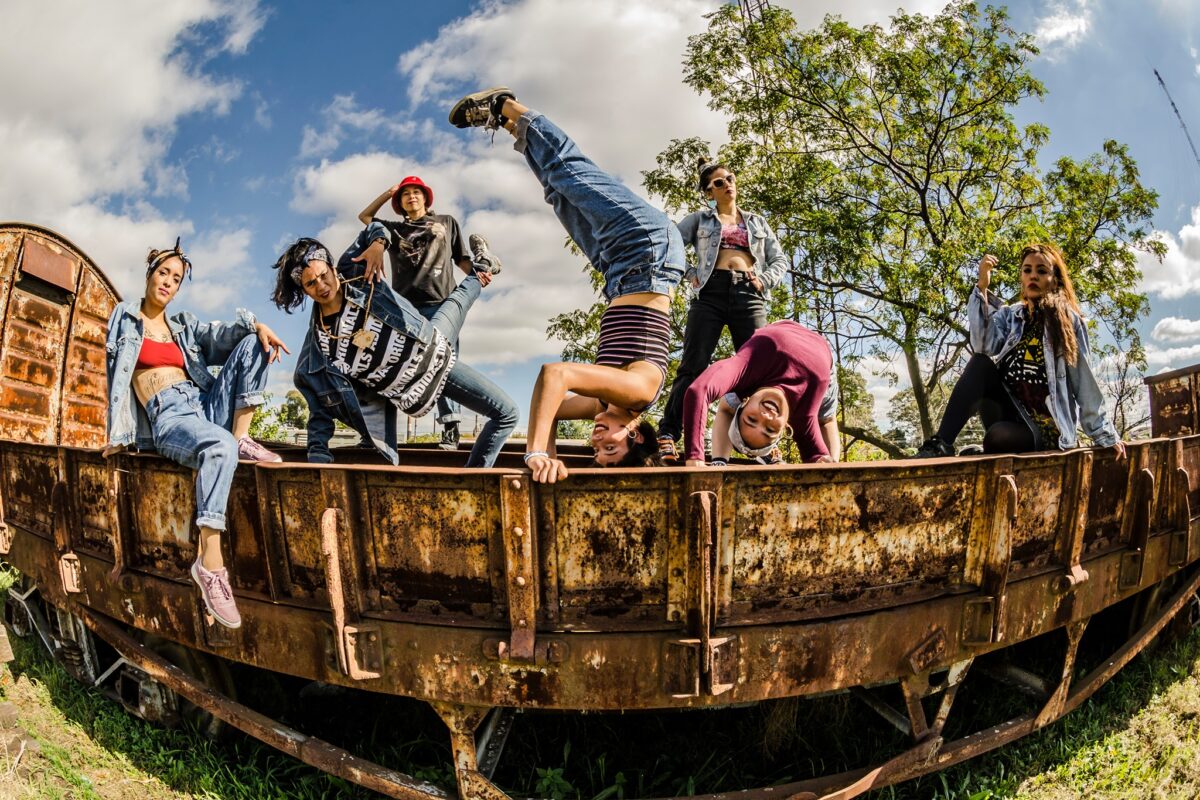
In Paraguay, there was a period when I was the only woman consistently participating in hip-hop culture. I had some female practice partners who were also intermittent in their involvement; they came and went. I was always present at all the events, and they referred to me as “Bboy Oli.” They still call me that. This way of addressing me made me feel unrecognized as a woman. However, I think the term “Bgirl” is quite challenging for us, coming from a bilingual country where we must incorporate another new word. I wonder if it’s invisibility or the difficulty of being referred to as a “Bgirl” in a foreign language. We navigate between Guaraní and Spanish, and learning the word is more complex. Or perhaps there is indeed a lack of visibility for women. I had a group of people I danced with and one day, I realized that decision-making always revolved around the men, and they also had opinions about my body and how I danced. A male colleague once told me, “But you dance like a man; you should dance like a woman because women have a different instinct.” I experienced many such situations and found myself alone for many years, unable to endure it any longer, which is why I came to Argentina.
It was challenging to think of myself as the only one. I thought it didn’t affect me; I didn’t realize it, but it did affect me. I was affected by the comments from men about my dancing, how I did things, and who I associated with. Only in recent years did I begin to navigate spaces of participation where the conversation started to open up, and I saw that other girls were experiencing the same things. Expressing oneself also comes at a cost, and it’s even more challenging for me because I come from another country. It’s said that the second skin of Paraguayans is silence, and we are deeply marked by the history of the dictatorship, which also plays a role in this game of silence, invisibility, not perceiving oneself as someone who causes discomfort, and silently accepting a position based on what others say. It was a challenging process for me, and while in Argentina, I also had to face the perception of being a foreigner. This fact made me see and feel different because an “other” pointed it out. These experiences marked different moments and ways of perceiving myself and defending my identity, which I understand is constantly changing and fluctuating.
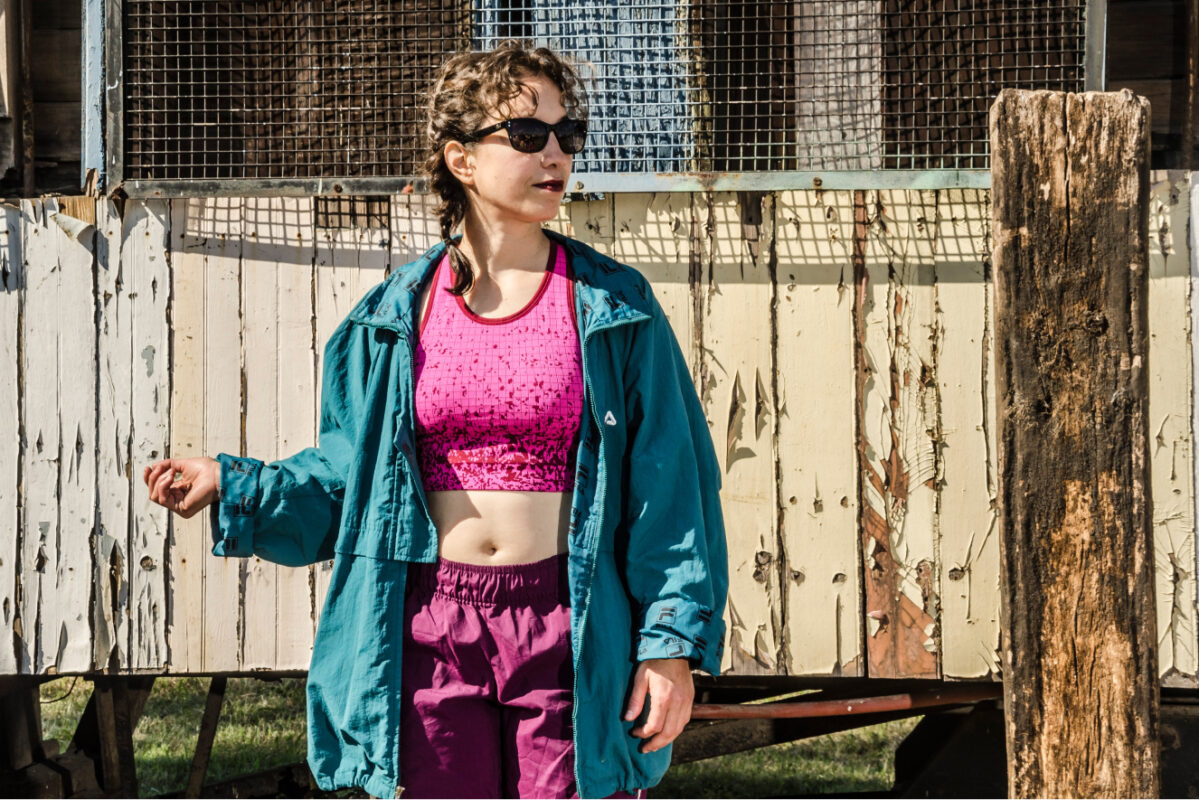
Thinking of ourselves as dancers, thinking of ourselves as workers
Hip-hop is part of the dance world, but generally, it is not seen as a dance form. It’s pretty stigmatized. Despite everything that exists, the policies promoting hip-hop performances, it’s still a struggle for us. We need to go through the process of thinking of ourselves as dancers. Our identity is often more associated with hip-hop culture, but we are also dancers and not just dancers or people who can dance, but also workers. It’s challenging to think of ourselves from an institutional perspective because we’ve continuously operated on the fringes, coming from the outside, never from within.
Hip-hop culture is still growing; it’s starting to mature. In the past, we didn’t discuss or debate these things; we just waited for competitions, and everyone would participate. There were no spaces for discussion, for opening up conversations about what we think. Lately, there’s been space for dialogue and debate, and I believe the pandemic context has something to do with it. This issue is very recent for us, and we are beginning to mature, and this process is gaining visibility. It’s a favorable moment to consider the scope of what we do, think of ourselves within policies, think of ourselves as cultural workers, and think of something beyond the spectacle.

Urban arts, in general, face labor precarity, but at the same time, they have the potential for social transformation. By working in communities and creating a network of urban arts workers through collectives, we can plan and manage what they need for their development. Our goal is to invite urban arts to become part of a network of workers to create an environment to work in what we love.
With people involved in breakdancing, we have created a network of urban artists to work together and find ways to overcome the labor precarity we are facing. While precarity existed before the pandemic, it has become even more apparent because we have nothing. Hip-hop needs more support from the media or institutions. That’s why we are fighting collectively. We also want to share what our crew is about and explore other artistic paths to expand and use art for social transformation. Hip-hop exists in the neighborhoods where it’s needed the most, but it requires more support.
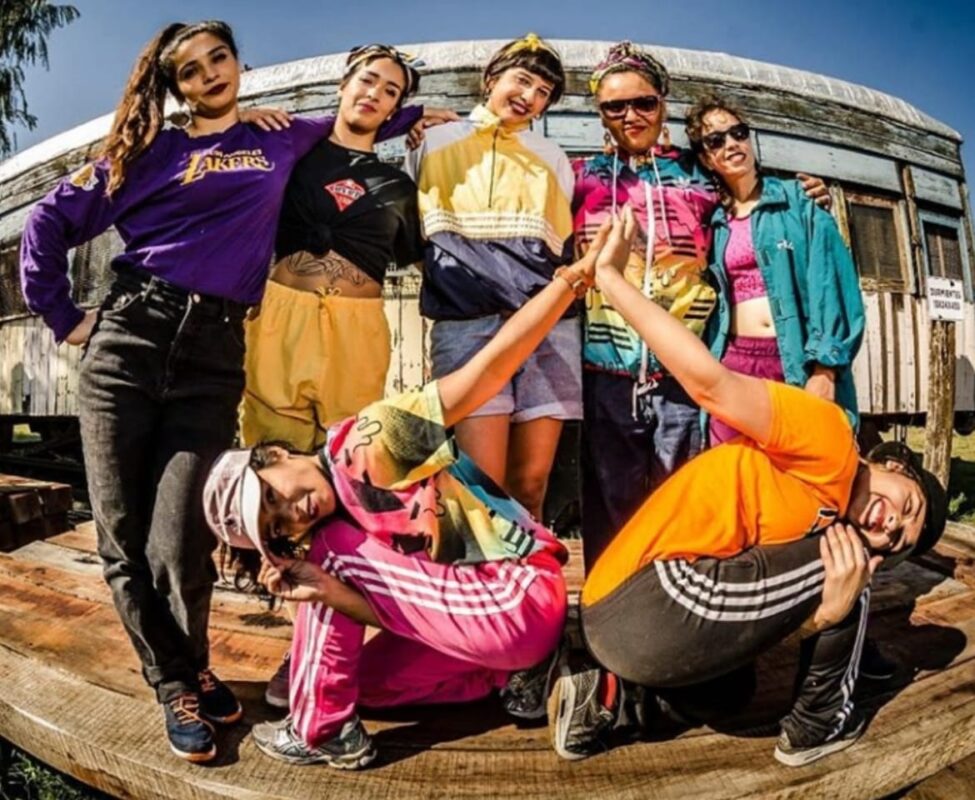
The circle that binds us
Being Superpoderosa, part of this crew showed me a lot of paths. Nowadays, there are other girls at the events, those who are being highlighted, and they are girls who are starting their journey. This fact served me to see that I was also part of it and that with my awakening, there were also other awakenings, which were collective. That opened a lot of doors for me, and I know that other girls also feel empowered with these same abilities. The act of dancing is a powerful act of empowerment.
With the Superpoderosas, we come together and train, generally to compete, but when we compete, we try to convey a message. So, we gather to train and develop choreographies and shows that carry a message. It’s not just about dancing for the sake of dancing but about conveying our message and making all the girls feel represented.
Before, I approached competitions in a certain way: I wanted to win, and that was all I cared about, and many people came it that way. But then I learned that competition is also a space for connection, for sharing. In rap, there is something called a cypher, which doesn’t come from competition but only exists through sharing. The cypher is a circle of people who share what they do, whether dancing, improvising, or something else. Whatever it is, it’s a meeting point where we relate through sharing. The word cypher means gathering, a gathering in a circle where we face each other and have a good time.
The cypher and competition constantly coexist, and I wonder if they are harmonious. Competition generates the desire to win; in it, not only your artistic name is at stake, but there is also a prize. That’s the most visible part; you don’t see the cypher, the gathering, where the exchange occurs, and where we practice because we need an academy to share our knowledge and learn that way. It’s a community that understands from its narratives, from sharing what it knows, from exchanging knowledge, experiences, and life stories of those who are present.

In the meetings, it used to be the same people, but lately, spectacularization has made it massive. That mainly happens with freestyle, which has another dimension, but on the other hand, there are these things that are organized in the squares, like the “Quinto escalón” that was born from some kids who managed and started making freestyle championships. It became so well-known that it turned into a mega event. Today, hip-hop is in the squares, on the corners, thanks to its diffusion in recent years and the massive audience it has reached. Something that changed the dance scene was its inclusion as an Olympic sport in the Youth Olympic Games in 2018. That was something we didn’t expect. It was a bit contentious because the Olympic committee didn’t ask for our opinion; they classified it as an Olympic sport. But as a community, we had no say in that decision. That fact also contributed to that massification: being seen as an Olympic sport had another worldwide impact.
Today, we can think of hip-hop as a choice for kids, just like soccer. The audience has expanded a lot thanks to the events and because hip hop has been promoted as a culture for everyone and any kid. You don’t need a dance or music studio to be a rapper. It’s right there, accessible to everyone.